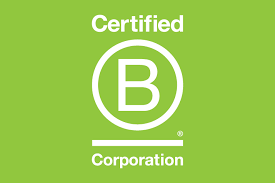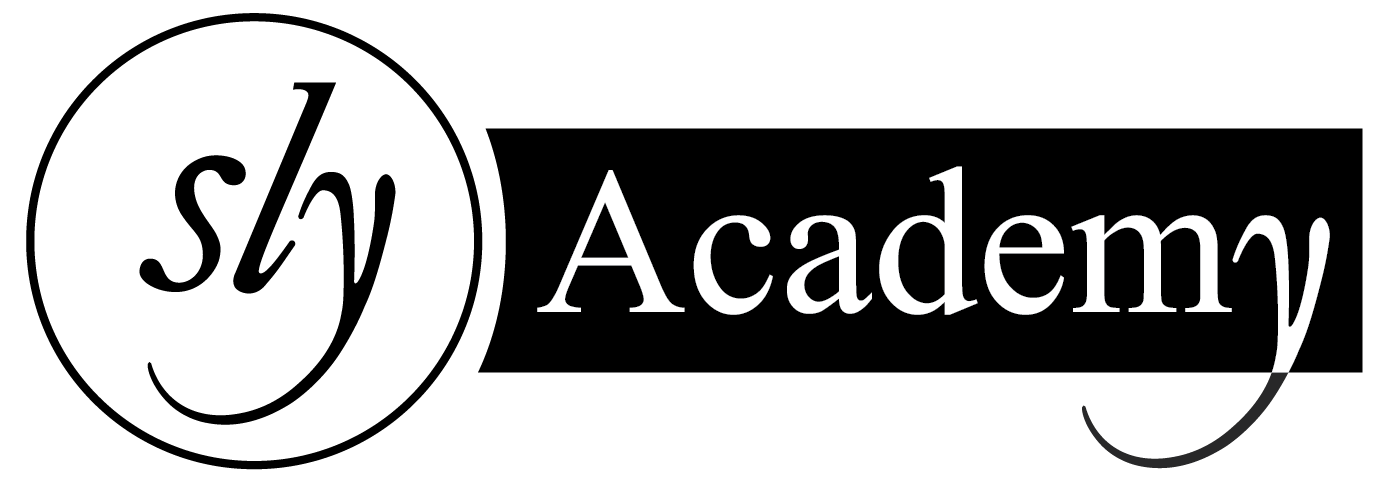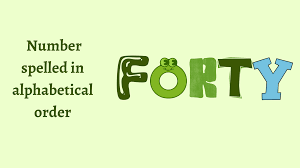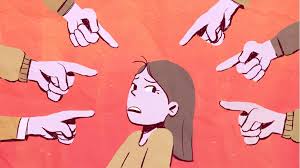
Table of Contents
Toggle“What is Prejudice” Everything You Need to Know
Have you ever stopped to wonder why we sometimes form quick opinions about people based solely on their appearance, background, or beliefs? Prejudice is a phenomenon that touches every corner of our society—from everyday interactions to large-scale institutional practices. In this comprehensive guide, we’ll explore what is prejudice, its definition, origins, and impact on society. We’ll also delve into real-world examples, common misconceptions, and current trends, so you can understand why prejudice is such a critical issue to address and how recognizing it can lead to a more inclusive world.
Introduction: The Hidden Impact of Prejudice
Imagine a world where everyone was judged solely on their abilities and character, rather than on superficial differences. Sadly, prejudice—a preconceived opinion not based on reason or experience—remains a pervasive force that affects millions of lives every day. Research shows that even subtle biases can influence hiring decisions, social interactions, and educational outcomes. Understanding what is prejudice is essential for creating more equitable communities and dismantling the barriers that divide us.
In this article, we will cover:
- A clear and straightforward definition of prejudice.
- The historical evolution and cultural context of prejudice.
- An in-depth exploration of the different forms and characteristics of prejudice.
- Real-world examples and case studies illustrating how prejudice manifests in society.
- The importance of understanding prejudice in various domains such as education, business, and social justice.
- Common misconceptions and FAQs to clarify any misunderstandings.
- Modern relevance and emerging trends in combating prejudice today.
By the end of this post, you’ll have a well-rounded understanding of what is prejudice and why addressing it is vital for personal growth and societal progress. Let’s embark on this enlightening journey together.
What is Prejudice? A Straightforward Definition
Prejudice is an unjustified or incorrect attitude (usually negative) toward an individual or group based on their perceived membership in a particular group. It involves forming opinions or making judgments about people without sufficient knowledge, and it often leads to discrimination and social inequality.
Essential Characteristics of Prejudice
Preconceived Opinion:
Prejudice is formed prior to any actual experience or factual knowledge about the target. It is based on assumptions rather than evidence.Irrationality:
These opinions are not grounded in reason or rational thought. Instead, they are based on stereotypes and misinformation.Negative Bias:
Prejudice typically involves a negative attitude towards a group or individual, which can lead to discriminatory behavior.Social and Cultural Influences:
Prejudice is often reinforced by cultural norms, historical contexts, and social structures, making it a deeply embedded societal issue.Resistance to Change:
Once formed, prejudiced beliefs are often resistant to change, even when confronted with evidence that contradicts them.
Understanding these characteristics helps us recognize how prejudice can influence our perceptions and actions, often without us even realizing it.
Historical and Contextual Background
The roots of prejudice are deep and intertwined with the history of human society. While the term “prejudice” may sound modern, the practice of judging others based on group membership dates back to ancient civilizations.
Early Human Societies and Tribalism
Origins in Survival:
Early human societies were built around small, close-knit tribes. In these communities, group loyalty was essential for survival, and differences between “insiders” and “outsiders” were crucial for protecting resources and ensuring safety.Evolution of In-Group/Out-Group Dynamics:
This tribal mentality laid the foundation for in-group favoritism and out-group discrimination—basic forms of prejudice that continue to influence social behavior today.
The Role of Religion and Philosophy
Religious Doctrines:
Many early religions and belief systems promoted the idea of a “chosen people” or divine favor, which sometimes resulted in prejudice against those who did not share the same faith.Philosophical Perspectives:
Philosophers such as Plato and Aristotle discussed the idea of inherent differences among people, ideas that would later be misused to justify discriminatory practices.
The Industrial Age and Modern Prejudice
Colonialism and Racism:
The colonial era saw the emergence of racial prejudice on a global scale. European colonial powers used prejudiced ideologies to justify the subjugation and exploitation of indigenous peoples.Scientific Racism:
In the 19th and early 20th centuries, pseudoscientific theories attempted to categorize human races hierarchically. These ideas provided a false rationale for segregation, slavery, and other forms of institutionalized prejudice.Civil Rights Movements:
The struggles of the 20th century, including the Civil Rights Movement in the United States, played a crucial role in challenging and dismantling prejudiced systems. These movements emphasized the importance of equality, human dignity, and the need to overcome inherited biases.
Notable Historical Anecdotes
The Apartheid Regime:
South Africa’s apartheid system, which legally enforced racial segregation from 1948 to 1994, is one of the most extreme examples of prejudice institutionalized by a state.The Holocaust:
The systematic genocide perpetrated by Nazi Germany was driven by deeply ingrained prejudices against Jews and other minority groups, illustrating the devastating consequences of unchecked hatred.
These historical contexts underscore that what is prejudice is not merely an abstract concept but a force that has shaped—and continues to shape—societies worldwide.
In-Depth Exploration: Forms, Attributes, and Manifestations of Prejudice
To fully understand what is prejudice, we must explore its different forms and how it manifests in various aspects of life. Prejudice can be seen in individual attitudes, institutional practices, and cultural norms.
1. Types of Prejudice
a. Racial Prejudice
- Definition:
Racial prejudice involves forming negative judgments about people based on their race or ethnicity. - Manifestations:
- Stereotyping: Generalizing characteristics, behaviors, or abilities to an entire race.
- Discrimination: Treating individuals unfairly because of their racial background.
- Examples:
Racial prejudice can be observed in hiring practices, educational opportunities, and social interactions.
b. Gender Prejudice
- Definition:
Gender prejudice is the biased attitude or discrimination against individuals based on their gender. - Manifestations:
- Sexism: Prejudiced beliefs and practices that disadvantage women or non-binary people.
- Gender Stereotypes: Overgeneralizations about the roles and behaviors expected from men and women.
- Examples:
Gender prejudice can be seen in wage gaps, media portrayals, and societal expectations regarding family roles.
c. Age Prejudice
- Definition:
Age prejudice involves stereotyping or discriminating against individuals because of their age, whether they are considered too young or too old. - Manifestations:
- Ageism in the Workplace: Discrimination against older employees or undervaluing the contributions of younger workers.
- Social Exclusion: Marginalizing individuals based on age-related assumptions.
- Examples:
Age prejudice is evident in societal attitudes that associate youth with inexperience and old age with incompetence.
d. Religious Prejudice
- Definition:
Religious prejudice is the formation of negative judgments about individuals based on their religious beliefs or practices. - Manifestations:
- Intolerance: Discriminatory actions or attitudes towards those of different faiths.
- Sectarian Conflict: Social and political divisions based on religious identity.
- Examples:
Religious prejudice has fueled conflicts in various regions, contributing to wars and societal divisions.
e. Prejudice Based on Nationality and Immigration Status
- Definition:
This type of prejudice involves forming opinions about individuals based on their national origin or immigration status. - Manifestations:
- Xenophobia: Fear or hatred of foreigners, often leading to discriminatory practices.
- Stereotyping of Immigrants: Assuming that individuals from certain countries share negative traits.
- Examples:
Nationality-based prejudice is evident in debates over immigration policies and the treatment of refugees.
f. Prejudice Based on Socioeconomic Status
- Definition:
Socioeconomic prejudice involves judgments and discrimination based on an individual’s economic status, education, or social class. - Manifestations:
- Classism: Prejudiced attitudes that favor higher socioeconomic classes over lower ones.
- Social Stratification: Institutional practices that maintain economic inequalities.
- Examples:
This type of prejudice is often visible in access to healthcare, education, and employment opportunities.
2. How Prejudice Manifests: Psychological and Social Mechanisms
a. Cognitive Biases
- Stereotyping:
Prejudice often stems from stereotyping, where people use simplified and generalized beliefs to categorize others quickly. - Confirmation Bias:
Individuals tend to favor information that confirms their pre-existing beliefs, reinforcing prejudiced attitudes. - In-group vs. Out-group Dynamics:
Social identity theory explains how individuals categorize themselves and others into groups, often leading to favoritism toward one’s in-group and discrimination against out-groups.
b. Emotional Influences
- Fear and Insecurity:
Prejudice can be fueled by fear—fear of the unknown, fear of loss of status, or fear of cultural change. - Social Conditioning:
Cultural norms and media portrayals often shape emotional responses that contribute to prejudiced thinking.
c. Social and Institutional Reinforcement
- Systemic Discrimination:
Prejudice is often embedded within social institutions (such as education, law enforcement, and the workplace), perpetuating cycles of inequality. - Cultural Narratives:
Historical narratives and cultural myths can reinforce prejudiced views, shaping how societies view certain groups.
3. Real-World Examples and Case Studies
a. Educational Disparities
- Case Study:
Studies have shown that racial prejudice can affect teacher expectations, leading to lower academic performance among students of color. For example, implicit bias in classroom settings may result in disciplinary measures that disproportionately target minority students. - Implications:
Addressing prejudice in education is crucial for creating equitable learning environments and promoting academic success for all students.
b. Workplace Discrimination
- Case Study:
Research in organizational behavior has documented instances where gender prejudice leads to a persistent wage gap between men and women. Companies with biased hiring practices or limited opportunities for career advancement are likely to perpetuate inequality. - Implications:
Recognizing and combating prejudice in the workplace can lead to more inclusive, innovative, and productive organizations.
c. Political and Social Movements
- Case Study:
The Black Lives Matter movement emerged as a response to systemic racial prejudice and violence. By highlighting injustices and mobilizing communities, the movement has sparked national and international debates on race and equality. - Implications:
Understanding the roots of prejudice can inform policies that promote social justice and reduce discrimination.
d. Media Representation
- Case Study:
Analysis of film and television content reveals that stereotypes based on race, gender, and other characteristics often reinforce prejudiced views. Positive and diverse representation in media, on the other hand, can challenge these stereotypes and foster a more inclusive culture. - Implications:
Media literacy and critical engagement with content are essential for recognizing and countering prejudicial narratives.
Importance, Applications, and Benefits of Understanding Prejudice
Understanding what is prejudice is not only an academic exercise—it has practical implications for personal growth, social justice, and institutional reform.
1. Personal Growth and Self-Awareness
- Enhanced Empathy:
Recognizing one’s own biases can lead to greater empathy and understanding toward others. - Improved Communication:
Being aware of prejudiced attitudes can help individuals communicate more respectfully and effectively. - Self-Reflection:
Reflecting on personal prejudices is a key step in overcoming them and fostering more positive interactions.
2. Social and Cultural Benefits
- Promoting Equality:
Addressing prejudice is essential for reducing social inequalities and ensuring fair treatment for all individuals. - Building Inclusive Communities:
Societies that actively work to dismantle prejudiced attitudes can create environments where diversity is celebrated. - Cultural Enrichment:
Understanding different cultural perspectives enriches societal interactions and broadens our collective knowledge.
3. Institutional and Policy Applications
- Educational Reform:
Integrating lessons on prejudice and bias into curricula can help combat discrimination from a young age. - Workplace Diversity:
Organizations that acknowledge and address prejudices are more likely to foster innovation and high performance through diverse teams. - Public Policy:
Policymakers who understand prejudice can design interventions to reduce discrimination in areas like housing, healthcare, and employment.
4. Global Impact
- International Relations:
On a global scale, reducing prejudice can lead to better diplomatic relations and more effective cooperation between nations. - Human Rights Advocacy:
Combatting prejudice is fundamental to promoting human rights and social justice worldwide.
Addressing Common Misconceptions and FAQs about Prejudice
Despite the importance of understanding prejudice, several myths and misunderstandings persist. Here we clarify some common misconceptions and provide clear answers to frequently asked questions.
Common Misconceptions
Misconception 1: Prejudice is the Same as Discrimination
Reality:
Prejudice refers to biased attitudes or preconceived opinions, whereas discrimination involves actions or behaviors based on those biases. While related, they are distinct concepts.Misconception 2: Prejudice Only Affects Minorities
Reality:
Prejudice can be directed toward any group, including those that hold majority status. It can manifest in various forms, such as sexism, ageism, or even prejudice based on political beliefs.Misconception 3: Prejudice is Inherent and Cannot Be Changed
Reality:
While deeply ingrained, prejudiced attitudes can be unlearned and changed through education, exposure, and self-reflection.Misconception 4: Prejudice is Only an Individual Problem
Reality:
Prejudice is both an individual and systemic issue. It is reinforced by cultural, institutional, and historical factors that require collective action to address.
Frequently Asked Questions (FAQs)
Q: What exactly is prejudice?
A:
Prejudice is an unjustified or preconceived opinion or feeling, typically negative, formed without adequate knowledge, thought, or reason. It often leads to stereotyping and discrimination.Q: How does prejudice develop?
A:
Prejudice can develop from various sources including upbringing, cultural norms, media portrayals, and personal experiences. Cognitive biases and social conditioning also play significant roles.Q: Can prejudice be eliminated?
A:
While it may be difficult to completely eliminate all prejudiced attitudes, education, open dialogue, and policy reforms can significantly reduce their impact.Q: How does prejudice differ from bias?
A:
Bias is a tendency or inclination to think in a certain way, while prejudice is a preconceived judgment that is often negative and unjustified. Bias can be both positive and negative, whereas prejudice is typically harmful.Q: Why is it important to understand prejudice?
A:
Understanding prejudice is essential for fostering empathy, promoting social justice, and creating inclusive environments. It also enables individuals and institutions to recognize and counteract discriminatory practices.
Modern Relevance and Current Trends in Addressing Prejudice
In today’s interconnected world, the study and discussion of what is prejudice continue to evolve. Here are some current trends and developments:
1. Social Justice Movements
Grassroots Activism:
Movements such as Black Lives Matter, Me Too, and others are actively working to expose and dismantle systemic prejudices. These movements use social media, protests, and policy advocacy to drive change.Inclusive Dialogue:
Increasing awareness of prejudice has led to more inclusive discussions in workplaces, schools, and communities. Programs focused on diversity and inclusion are now mainstream in many institutions.
2. Advances in Research and Education
Interdisciplinary Studies:
Scholars in psychology, sociology, and neuroscience are collaborating to understand the origins of prejudice and develop effective interventions.Educational Curricula:
Many schools and universities now incorporate lessons on prejudice, implicit bias, and cultural competence into their curricula, helping to build more empathetic and informed future generations.
3. Technological and Media Influences
Digital Platforms:
Social media has both exacerbated and provided tools to combat prejudice. Algorithms and online communities can reinforce biases, yet they also enable diverse voices to challenge stereotypes.Media Representation:
There is a growing emphasis on accurate and diverse representation in films, television, and news media. Positive media portrayals help counteract prejudiced narratives and foster a more inclusive culture.
4. Policy and Institutional Reforms
Legislative Changes:
Governments around the world are increasingly aware of the harmful impacts of prejudice. New policies and reforms aimed at reducing discrimination in housing, education, and employment are being implemented.Corporate Initiatives:
Companies are investing in diversity, equity, and inclusion (DEI) programs to address workplace prejudice and build more equitable environments.
Conclusion: Embracing the Challenge of Overcoming Prejudice
In our comprehensive exploration of what is prejudice, we have delved into its definition, origins, forms, and impact on society. Here are the key takeaways:
Definition and Fundamentals:
Prejudice is an unfounded, negative attitude or belief formed without adequate knowledge, often leading to stereotyping and discrimination.Historical Context:
Prejudice has deep historical roots, influenced by cultural, social, and institutional forces that continue to shape our world today.Forms and Manifestations:
Prejudice manifests in many forms—racial, gender, age, religious, and more—each with its own set of characteristics and consequences.Modern Relevance:
Addressing prejudice is crucial for personal growth, social justice, and institutional reform. Through education, dialogue, and policy change, we can work together to reduce the harmful impacts of prejudice.Call to Action:
Recognizing and understanding prejudice is the first step toward creating a more inclusive, equitable society. By challenging our own biases and advocating for change, we can help dismantle the barriers that divide us.
Call to Action
Now that you have a thorough understanding of what is prejudice, we encourage you to:
- Reflect: Consider how prejudice might affect your own perceptions and behaviors. Reflect on the sources of your beliefs and strive for greater understanding.
- Explore Further: Engage with literature, documentaries, and research on prejudice and implicit bias to deepen your understanding.
- Engage: Share your thoughts, experiences, or questions in the comments below. How has learning about prejudice influenced your perspective on society and human behavior?
- Share: If you found this article informative and thought-provoking, please share it with friends, educators, and colleagues. Spread awareness and encourage constructive dialogue about prejudice and its impact.
By confronting prejudice head-on, we empower ourselves and our communities to build a future where every individual is judged on their true merits rather than on unfounded assumptions.
Additional Resources and References
For further exploration of what is prejudice, here are some reputable sources and further reading materials:
Books and Academic Texts:
- “Blindspot: Hidden Biases of Good People” by Mahzarin R. Banaji and Anthony G. Greenwald – An accessible exploration of implicit bias and prejudice.
- “The Nature of Prejudice” by Gordon W. Allport – A classic text that laid the foundation for modern studies on prejudice.
- “Everyday Bias: Identifying and Navigating Unconscious Judgments in Our Daily Lives” by Howard J. Ross – A contemporary look at how bias and prejudice manifest in everyday interactions.
Online Educational Resources:
- American Psychological Association (APA) – Articles and research on prejudice, implicit bias, and social psychology.
- Teaching Tolerance – Resources for educators on addressing prejudice and promoting diversity in the classroom.
- Implicit Association Test (IAT) – An online tool developed by Harvard researchers to help individuals identify their own unconscious biases.
Research Journals and Articles:
- Journal of Personality and Social Psychology – Features research articles on the psychological aspects of prejudice.
- Social Issues and Policy Review – Offers interdisciplinary insights on social inequality and prejudice.
- Ethnic and Racial Studies – Academic articles on prejudice and discrimination across different social contexts.
Workshops and Online Courses:
- Platforms such as Coursera, edX, and Udemy offer courses on diversity, inclusion, and social psychology that explore prejudice and bias in depth.
- Local community centers and educational institutions often host workshops on cultural competence and bias reduction.
Final Thoughts
Prejudice is a deeply rooted issue that affects individuals and societies worldwide. By understanding what is prejudice, we equip ourselves with the knowledge to recognize, challenge, and ultimately overcome the biases that divide us. Whether through education, personal reflection, or active dialogue, every effort counts in creating a more just and inclusive world.
Thank you for joining us on this in-depth exploration of prejudice. We hope this article has not only expanded your understanding but also inspired you to take action against prejudice in your own life. If you enjoyed this post, please share it, leave your feedback or questions in the comments below, and help spread the word about the importance of confronting prejudice.
Recent Posts
- Yelp Business: Everything You Need to Know
- MLM (Multi-Level Marketing): Everything You Need to Know
- Network Marketing: Everything You Need to Know
- B Corporation: Everything You Need to Know
- QuickBooks Self Employed: Everything You Need to Know
- State Corporation Commission: Everything You Need to Know
- Business Plans: Everything You Need to Know
- Business Center: Everything You Need to Know
- Primerica Online: Everything You Need to Know
- S Corporation: Everything You Need to Know
- Business Line of Credit: Everything You Need to Know
- LLC: Everything You Need to Know About Limited Liability Companies
- Business: Everything You Need to Know About Navigating the World of Commerce
- Entrepreneur: Everything You Need to Know
- What is Vocabulary
Choose Topic
- ACT (17)
- AP (20)
- AP Art and Design (5)
- AP Physics 1 (1)
- AQA (5)
- Artificial intelligence (AI) (2)
- Banking and Finance (6)
- Biology (13)
- Business Ideas (68)
- Calculator (72)
- ChatGPT (1)
- Chemistry (3)
- Colleges Rankings (48)
- Computer Science (4)
- Conversion Tools (136)
- Cosmetic Procedures (50)
- Cryptocurrency (49)
- Digital SAT (3)
- Edexcel (4)
- English (1)
- Environmental Science (2)
- Etiology (7)
- Exam Updates (1)
- Finance (31)
- Fitness & Wellness (164)
- Free Learning Resources (210)
- GCSE (1)
- General Guides (40)
- Health (107)
- History and Social Sciences (152)
- IB (1)
- IGCSE (2)
- Image Converters (3)
- IMF (10)
- Math (43)
- Mental Health (58)
- News (11)
- OCR (3)
- Past Papers (463)
- Physics (5)
- SAT (39)
- Schools (3)
- Sciences (1)
- Short Notes (5)
- Study Guides (28)
- Syllabus (19)
- Tools (1)
- Tutoring (1)
- What is? (312)
Recent Comments

What is Wireless Application Protocol

Yelp Business: Everything You Need to Know
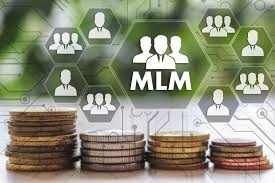
MLM (Multi-Level Marketing): Everything You Need to Know
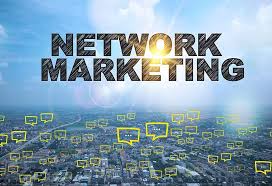
Network Marketing: Everything You Need to Know
